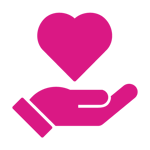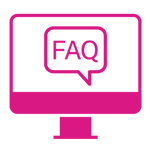
A risk factor is anything that can increase your chance of developing a certain condition, such as breast cancer.
Some risk factors can be changed and some can't.
Getting older and being born female are the two biggest risk factors for breast cancer.

Most women diagnosed with breast cancer are over 50 years old.1518
Risk factors you can’t change (non-modifiable) include:
- getting older.
- a family history of breast or ovarian cancer (ovarian cancer risk is often linked to breast cancer risk).
- inherited genetic factors, such as a faulty or mutated gene.
- medical history, such as previously having radiation therapy, breast cancer or another type of cancer.
- reproductive history, such as starting menstruation very young, reaching menopause late, or not having had children.
- having dense breasts.
Around a quarter of all breast cancers could potentially be prevented through lifestyle and other changes.5536
![]()
More ways to reduce your breast cancer risk
|
Stop smoking
|
Many studies show that tobacco smoking may be associated with an increased risk of breast cancer. We know quitting is not always easy, but it is one of the most effective things you can do to reduce your overall cancer risk and live a longer, healthier life. Visit iCanQuit or call Quitline on 13 7848 (13 QUIT). |
|
Breastfeed
|
Breastfeeding can reduce the risk of breast cancer – and the longer the duration of breastfeeding, the greater the benefits. |
|
Consume dairy
|
Eating and drinking dairy products may be associated with a decreased risk of breast cancer. Dairy products are foods made from the milk of mammals such as cows, sheep and goats. |
|
Eat vegetables
|
Eating lots of veggies each day may be associated with a decreased risk of breast cancer. Vegetables can be either starchy (eg potatoes) or non-starchy (eg green leafy vegetables, carrots and onions). |
Find out more information about breast cancer risks on the Cancer Australia website.
Family history and inherited genetic factors
It's important to note that most breast cancers are not caused by known genetic factors. Most women who develop breast cancer DO NOT have a family history of the disease.
Around 5% of breast cancers are due to a strong family history or genetic mutation, such as BRCA1 or BRCA2.1522
If you:
- have a first-degree relative (such as a parent, sibling, or child) diagnosed with breast cancer before age 50
- are assessed by BreastScreen NSW as needing more frequent monitoring
- are assessed by your doctor as being high risk,
it may be recommended that you have an annual breast screen from age 40.
If you have a blood relative diagnosed with breast cancer over 50 years old and no other contributing factors, then you are at similar risk to developing breast cancer as the general population. You will be offered a breast screen every two years.
Speak to your doctor if you have questions about your family history of breast cancer. You should inform your doctor and BreastScreen NSW about any new cases of breast cancer diagnosed in your family since your last breast screen.
Understanding your breast cancer risk
Having one or more risk factors does not mean you will develop cancer. To determine a woman’s risk of breast cancer it is important to consider all factors including age, genetics, behavioural and environmental factors.
Understanding your individual risk can provide peace of mind. You can complete a risk assessment yourself at no cost. The risk report can provide the basis for discussions between women and their doctors about their individual breast cancer risk, prevention and screening management.
The iPreventTM Risk Assessment Tool, developed in Australia, estimates a woman’s breast cancer risk and provides a breast cancer screening and prevention report, including screening recommendations and risk reducing options, that is personalised to you.
Other tools include:
Other useful links
Get Healthy NSW offers free health coaching over the phone to help you reach your health goals, including cutting down on alcohol. Go to Drink less alcohol for information about alcohol and cancer risk.
Eat healthy provides information and support to make healthy changes for cancer prevention. Also Healthy Eating Active Living is a NSW Government website with healthy eating tips and information on free programs to get you active.
Helping Mob Live Healthy and Prevent Cancer is a toolkit for the Aboriginal health workforce.
Healthy Eating Active Living for the mob provides information and specific programs for Aboriginal people that can assist you and your family with what to eat and how to get active.
The Australian Dietary Guidelines tell you what foods to eat and how much. They also tell you what foods to avoid.
Be more active provides information and support to reduce your risk of cancer. Also Australia’s Physical activity and exercise guidelines tell you how much exercise you should do each day. They also give tips on how you can get started.
iCanQuit provides handy tools and practical advice to help you begin your quit smoking journey – and stay quit for good.
If you have any questions about your personal risk of breast cancer, please speak with your doctor.
Understand this important cancer screening test.
Know the facts and risks.
Find out if you are eligible to screen with BreastScreen NSW.
Know what you should look out for.
What to expect before during and after your breast screen.
Find out about dense breast tissue and its impact on breast screening.



